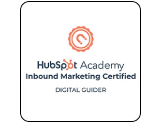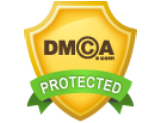Are you putting all your time & effort into creating high-quality content but still need to see the desired results?
It’s not about who creates the best content anymore but who markets it better. Companies worldwide are making tons of high-quality business blogs and fighting tooth & nail, so they can reach the right audience and get the right traction.
Wondering! how can you get people interested in your brand content & improve your engagement rates? That’s where content amplification plays a major role. Let’s get to know more about this:
What Is Content Amplification?
You just spent all your precious time creating the best content ever, only to see, a discouraging online engagement rate?
You need to expand your content reach, then.
Content amplification is the process of promoting your content to a wider audience. It can be done through a variety of channels, such as social media, email marketing, and paid advertising. Content amplification tools can help you automate and streamline the process of promoting your content, making it easier to reach a wider audience.
If done correctly, a good content amplification strategy will distribute your content effectively and reach your audience regardless of where they are in your sales funnel.
Why Should You Amplify Your Content?
Let’s say your company has performed in-depth research or published an informative blog piece that can help others in your industry. You would surely want more & more people to read it & engage with it, and take some action, whether it is sharing their opinion or their contact information for you to contact them later.
But, due to the limited reach of your website, only a few people have viewed your content piece.
It must be disappointing, right?
On the other hand, if you had shared your research discoveries on social media platforms and approached some social influencers of your niche to share it through their social handles, linked to it in your email newsletters, or even better, launched a paid media campaign. Think about the view, engagement & leads you’ve got then.
This is the impact digital amplification can have on your brand’s reach & engagement.
Content amplification is a key piece of any effective content marketing strategy to boost your content’s reach across multiple online channels.
Here are a few reasons you should amplify your content:
- More visibility: Amplifying your content helps it reach a wider audience, leading to more website traffic, social media followers, and ultimately more sales.
- Improved engagement: Amplifying your content on social media, email, and other channels can help you engage with your audience and build stronger relationships with them.
- Greater authority: When others share your content, it can help establish you and your brand as thought leaders in your industry.
- More backlinks: When others share your content, it can also lead to more backlinks to your website, which can improve your search engine rankings.
- Cost-effective: Amplifying your content doesn’t have to cost a lot of money. There are many low-cost or free ways to promote your content, such as social media, email, and influencer outreach.
- Measurable results: By tracking the success of your content amplification efforts, you can see what’s working and what’s not and thus adjust your content amplification strategy.
In short, content amplification is a much-needed approach for getting your content in front of the right people and achieving your marketing goals.
So don’t just create great content—amplify it for best result…
Content Amplification Strategies: Get Your Content Strategy Right!
Three main types of content amplification are owned, paid, and earned. Here’s what you need to know about each of them:
Owned content amplification
You can use your own channels to promote your content. Here are some ways you can widen the reach of your content pieces.
- Search Engine Optimization: You can increase the impact of your content by making it easier for people to find it through SEO techniques by using keywords, meta tags, internal links, and social sharing buttons on your website. For example, you’ve written an article about the best plumbers near you. You must include keywords such as “best plumbers in (your area) in your article and meta tags to help search engines find your post. You can also use internal links on your website to link to related content and include social sharing buttons so that users can easily share your post on social media.
- Email marketing: Whether you’re sharing your latest blog post, video, or podcast, email newsletters are a great way to get your message out there. Plus, you can use email marketing to reach out to people who have subscribed to your lead magnets or other freebies. For example, if you have a fitness business, you must send a weekly email highlighting your latest workout routine or healthy recipe.
- Use social media platforms for amplification: In addition to sharing your content on social media, you can also use social media platforms to amplify your content. You can promote your products or services on Instagram Stories or your LinkedIn business page. You can also host Q&A sessions with your followers on Facebook Live. Different social media platforms allow you to reach different audiences and boost your brand’s visibility.
Paid content amplification
As the name suggests, this involves paying to get your content in front of a larger audience. Some common ways to do this include:
- Social media advertising: Social media advertising is a great way to reach your audience and drive more traffic to your site. Facebook Ads, X Ads, Instagram Ads, and LinkedIn Ads are some of the most popular social media platforms for promoting your content. For example, you can create targeted Facebook Ads that show up in the newsfeed of people who are likely to like your content.
- Paid Search Advertising: Another great way to increase the reach of your content is through PPC ( pay-per-click ). You can create targeted ads on Google Ads and Bing Ads that show up at the top of the search results pages. This allows you to target people who are actively looking for your type of content. For instance, if you’re a travel company, you can use Google Ads to target people searching for “best places to see in America.”
- Influencer marketing: Working with influencers is another great way to get your content out there. These people have many followers on social media, so you can reach out to them and get them to share your stuff. With influencer marketing, you can get more people to see your offer. For example, if you have a restaurant business, you should collaborate with a food influencer who’s super popular on Instagram.
Earned content amplification
Leverage other people’s networks to promote your content. This type of amplification can be more difficult to achieve but can also be more powerful, as it is seen as more authentic. Some ways of earned content amplification are:
- Outreach: When another website or influencer in your industry share your content, you gain trust & authority from search engine by emailing bloggers, contacting journalists, or working with other companies in your industry. When you reach out to other people in your field, you can use their existing audience to your advantage. You can also offer them a guest post on their website that links back to your website and content.
- Social media shares: If your content is particularly valuable or entertaining, people may share it on their own social media channels without you even asking. That way, you can get your content out there to more people. Therefore you must create content that is informational & shareable. Use hashtags to make sure more people see your content. It can also help you get more traffic to your website. People who see your content sharing on social media are more likely to go to your website. So, for example, if you have created a blog post about the latest AI tools, such as Chat GPT, you can share it with your followers on your social media accounts to gain traction.
- Content Syndication: Content syndication is the best way to get your content out there and reach more people. You could republish your most recent blog post on a third-party website, such as Medium or LinkedIn Pulse, with a link directly to your website.

Remember, the secret to successful content amplification is a mix of all three.
Owned Amplification: Engage your existing followers.
Paid Amplification: Get your content out to new audiences.
Earned Amplification: Increase your reach.
What Are The Some Content Amplification Tools?
The main goal of digital amplification or content marketing is to get others to start talking about your brand. For doing so, it is a no-brainer to use different tactics and tools to get your content to maximum reach.
Let’s check out some of the most popular content amplification tools, both free and paid.
Medium
Medium has an established community of users eager to consume long-form, high-quality content. This makes Medium an ideal platform for the promotion of blogs and articles.

Plus point of Medium is that it’s a free platform that enables content creators to publish their content on the platform and expand their reach.
CoPromote
CoPromote is a popular content amplification platform that allows you to share your content with a network of social media users who have agreed to share content in your niche. The platform works on a credit-based system, where users earn credits by sharing other users’ content and spend credits to promote their own content. The popular website “Hootsuite” also uses CoPromote to promote its blog posts across a network of relevant social media users.
Outbrain
If you want to drive traffic to your website by promoting your content on other high-traffic websites, Outbrain is your go-to partner. It uses an algorithm to match your content with the most relevant websites and audiences. It also offers analytics tools to help you track the success of your content promotion. Even Forbes uses Outbrain to promote its articles on other high-traffic websites.
Taboola
Taboola is another popular content discovery platform that operates similarly to Outbrain. You can promote your content on other high-traffic websites, which helps drive traffic back to your website.

Taboola uses machine learning algorithms to match your content with the most relevant audiences.
Quuu Promote
With Quuu Promote, you can increase the visibility of your content on social media sites like Facebook, LinkedIn, and Twitter. Quuu Promote shares your content through its user base to increase website traffic.

It also provides analytics tools to monitor your content promotion’s effectiveness.
Revcontent

Revcontent is a paid platform that helps you promote your content to other websites with high traffic. It works by using an algorithm to figure out which websites and audiences your content is most relevant to. Plus, you can use analytics tools to see your content promotion’s success.
Zemanta

If you’re looking to get the maximum visibility possible, Zemanta is the way to go. It’s a paid platform that helps you promote your content to other websites, with many people visiting them.

It uses machine learning to find the best people to target with your content. Plus, you can use their analytics tools to track your content promotion’s success.
Buffer
Buffer a popular social media management tool that helps to amplify your content on social media platforms like Twitter, LinkedIn, and Facebook.

It allows you to schedule your posts and track the success of your content promotion. It also offers multiple analytics tools to help you optimize your social media strategy.
Hootsuite
Hootsuite is another popular social media management tool that helps to amplify your content on social media platforms like Twitter, LinkedIn, and Facebook. Hootsuite allows you to schedule your posts, monitor your social media accounts, and track the success of your content promotion.

It also offers analytics tools to help you optimize your social media strategy. For example, the University of Oxford uses Hootsuite to promote its articles on Twitter.
BuzzSumo

BuzzSumo is a tool that helps you find and analyze popular content. You can use BuzzSumo to find content that is relevant to your target audience, and that has already been shared by many people.
There are tons of content amplification tools out there, both free and paid, that can help you get your content out there and reach more people. Use the one that suits your brand’s needs and budget the best.
In Conclusion,
So there you have it! All the tips and techniques on how to use content amplification tools & strategies to get your reach and engagement up and running.
We hope you found it useful and practical. It’s important to remember that content amplification differs for everyone, so it’s always a good idea to test different approaches and see what works for you.
To sum up, we’ve learned from this blog that you should use multiple channels to promote your content, from social media to email marketing and paid advertising. Optimize your content to get the most out of each track and audience.
You can also use influencers to get more reach and engagement. And don’t forget to use AI tools and data to see how your content amplification efforts are doing and how you can make changes.
Creating great content is just the first step – the other half is getting it out there and getting your target audience to reach your marketing goals.
Content Amplification FAQ
Why is content amplification important?
Content amplification helps increase your content's reach and engagement, driving more traffic and leads to your website and improving your overall online visibility.
What are some content amplification strategies?
Some content amplification strategies include social media advertising, influencer outreach, email marketing, guest posting, and content syndication.
How to measure the success of my content amplification efforts?
You can measure the success of your content amplification efforts by tracking key performance indicators like website traffic, engagement rates, conversion rates, and ROI.
What are some best practices for content amplification?
Some best practices for content amplification include creating high-quality content, targeting the right audience, using engaging visuals and headlines, and using multiple channels to promote your content.
What are some typical errors to avoid in content amplification?
Common mistakes to avoid in content amplification include:
- Targeting the wrong audience
- Overpromoting your content
- Using low-quality visuals and headlines
- Ignoring metrics and analytics
You can always hire a content marketing agency if you don’t have prior experience. Contact us now to get started with your content marketing.
How can I optimize my content for rich results in search engines?
It would be best to focus on creating high-quality, structured content that includes relevant keywords, metadata, and structured data markup for optimizing your content for rich results in search engines.
What are some common types of rich results?
Common types of rich results include featured snippets, knowledge panels, recipe cards, event listings, and video thumbnails.
How to improve my chances of appearing in rich results?
You should create high-quality, structured content that aligns with search intent, optimize your metadata and structured data markup, and build authoritative backlinks to your website.
Digital Guider’s SEO services can help you increase your chances of appearing in top rankings & rich snippets. Book a free consultation with us now!
What are some best practices for optimizing content for SERP features?
Some best practices for optimizing content for SERP features include understanding search intent, using relevant keywords, creating high-quality content, optimizing metadata and structured data markup, and building authoritative backlinks to your website.







